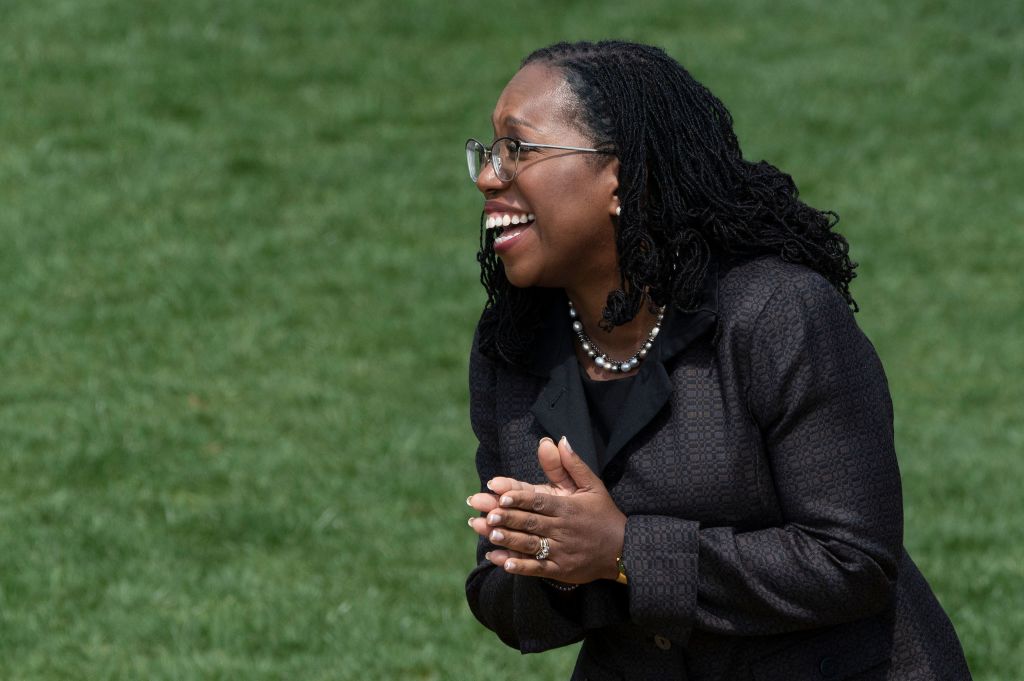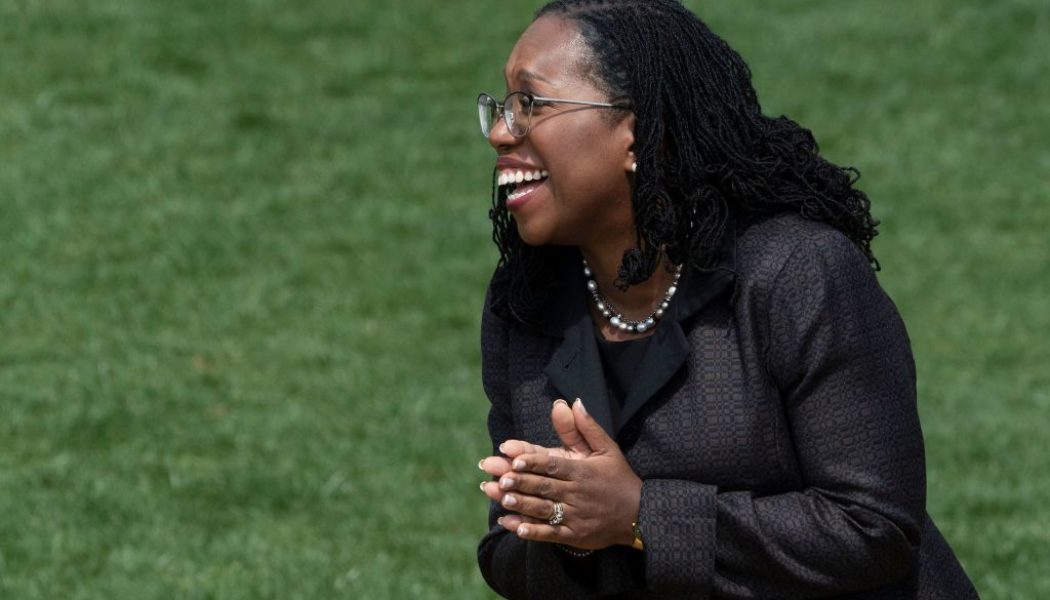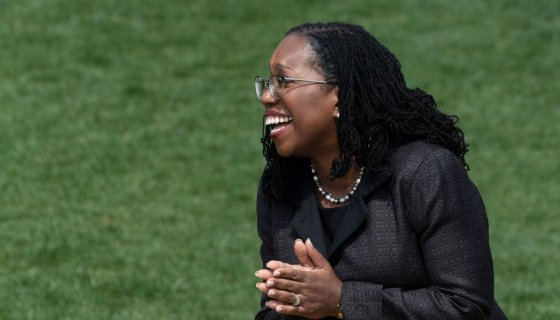
Source: JIM WATSON / Getty
The historic moment of Ketanji Brown Jackson becoming the newest Supreme Court Justice and the first Black woman to do is heightned by the court’s past justices.
Marking a significant change forever in the way the Supreme Court of the United States has been, federal judge Ketanji Brown Jackson became its 116th Justice on Thursday (April 7th) after a vote by the Senate of 53-47. Three GOP senators, Sens. Mitt Romney of Utah, Susan Collins of Maine and Lisa Murkowski of Alaska crossed party lines to support her, with Romney applauding along with Democratic Senators as Vice President Kamala Harris announced the results. Others from the GOP walked out, with the lone Black Republican male senator, Tim Scott of South Carolina, voting nay to her confirmation.
The moment was the exclamation point on a significant change in American history. Jackson’s ascension to replace retiring Justice Stephen Breyer, who she once clerked for, notes a shift away from the highest court in the land being dominated by a “private club” mentality that only saw white men considered since its creation in 1789. Out of the 115 who have served on the Supreme Court, 110 of them have been white men. Thurgood Marshall’s appointment to the court in 1967 by then-president Lyndon B. Johnson broke that color barrier. Clarence Thomas, who currently serves on the court, was appointed by George H.W. Bush in 1991 to be the second Black SCOTUS Justice.
Women had been previously appointed to lower courts by other presidents, but it wasn’t until Ronald Reagan’s presidential campaign pledge to put a woman on the court in 1980 and Sandra Day O’Connor’s appointment the following year where that ceiling was shattered. Since then, there have been four women who have served on the court. Three of them – Sonia Sotomayor, Elena Kagan and Amy Comey Barrett, are still serving their lifetime appointments with Barrett being named by former President Donald Trump after the death of Justice Ruth Bader Ginsburg. Another interesting note is that the recent decades have seen the religious diversity of the court become expanded, with eight justices being Jewish and six of the current justices being Catholic.
Jackson’s presence on the court is one to be celebrated in the push to have the highest court in the land be more representative of the nation, one which will undoubtedly be the centerpiece at the press conference honoring her confirmation at the White House this afternoon. But it is just the next step of many more that are needed for true representation.











Tagged: entertainment blog, Ketanji Brown Jackson, music blog, NEWS, Newsletter, U.S. Supreme Court